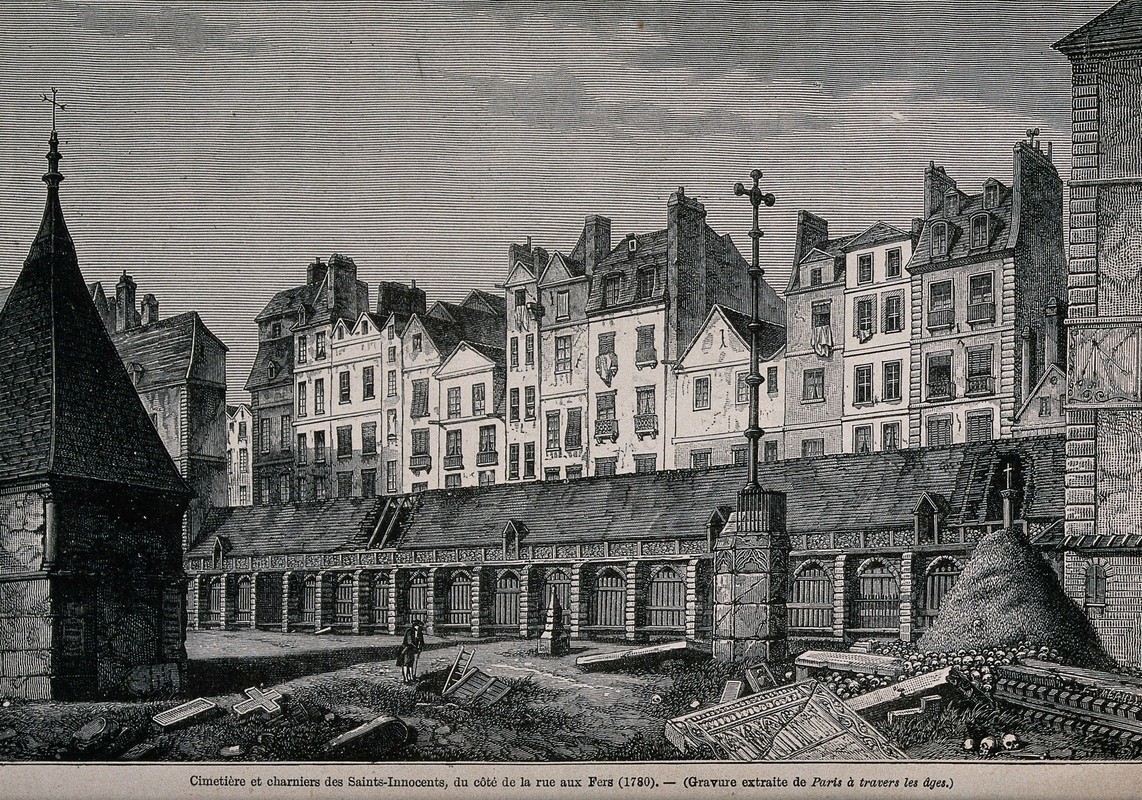Beneath the romantic streets of Paris, a labyrinth of tunnels stretches, holding a secret history far darker than the city of lights above. These are the Catacombs of Paris, an ossuary holding the remains of millions. Many are drawn to this eerie attraction, intrigued and perhaps a little unnerved by the sheer scale of human bones stacked meticulously in the underground passages. But Why Were The Catacombs Built? The answer lies in a story of overflowing cemeteries and a city grappling with its own mortality.
 Paris Catacombs History
Paris Catacombs History
The Crisis of Overcrowded Parisian Cemeteries
To understand the origins of the Catacombs, we must delve into the history of Paris’s cemeteries. In the past, burial grounds were situated within the city walls, a common practice in many European cities. These cemeteries, much like the famous Père Lachaise today, were not just final resting places but also integral parts of the community, filled with stories and even becoming public spaces. However, as Paris grew, so did its population, and consequently, so did the number of interments. The cemeteries became victims of their own success, facing severe overpopulation.
This wasn’t simply an issue of space; it became a significant public health concern. The Cemetery of the Innocents, one of the city’s oldest and largest cemeteries, exemplified this crisis. By the late 18th century, it was so densely packed that decomposition became problematic, leading to foul odors and potential disease. The breaking point arrived in 1780 when a wall adjacent to the cemetery collapsed due to the pressure of the mass graves. Human remains spilled into a neighboring property, flooding basements and exposing the unsanitary conditions to the horrified public.
The Decision to Create an Ossuary
The Cemetery of the Innocents was deemed a public health hazard and was ordered to be closed. City authorities made a momentous decision: to exhume the bones from the overcrowded cemeteries and relocate them to a less disruptive location. The chosen site was the network of abandoned stone quarries beneath Paris. These quarries, remnants of Roman and medieval mining operations, formed an extensive underground tunnel system stretching for hundreds of kilometers beneath the city. Ironically, the very stones that built Paris above were now to house its deceased below.
Starting in 1786, a clandestine operation began. Nocturnal processions of carts, led by priests, silently transported millions of skeletal remains from the Cemetery of the Innocents and other Parisian cemeteries to the underground quarries. This transfer continued for years, even throughout the tumultuous period of the French Revolution, during which remains from deconsecrated churches and revolutionary victims were also added to the ossuary. The bones were initially piled unceremoniously within the tunnels.
From Disorder to Necropolis: The Catacombs Take Shape
During the Napoleonic era, at the beginning of the 19th century, a more organized approach was adopted for the bone storage. Inspired by Roman burial practices, the decision was made to transform the chaotic piles of bones into a proper necropolis, or “city of the dead”. Workers began arranging the skulls and long bones into the recognizable patterns and stacks we see today. This aesthetic arrangement served a practical purpose – maximizing space – but also lent a somber and strangely compelling atmosphere to the Catacombs.
Today, it is estimated that the Catacombs hold the remains of over six million individuals. This vast number and the unique environment have naturally given rise to legends and ghost stories. Tales circulate of those who ventured beyond the designated visitor paths and became lost forever in the dark maze.
The Paris Catacombs have transformed from a solution to a public health crisis into a major tourist attraction. Visitors from around the globe descend into the depths to witness this extraordinary and macabre monument to Parisian history. Be prepared for a wait, however, as queues can stretch for hours, a testament to the enduring fascination with this city beneath a city.